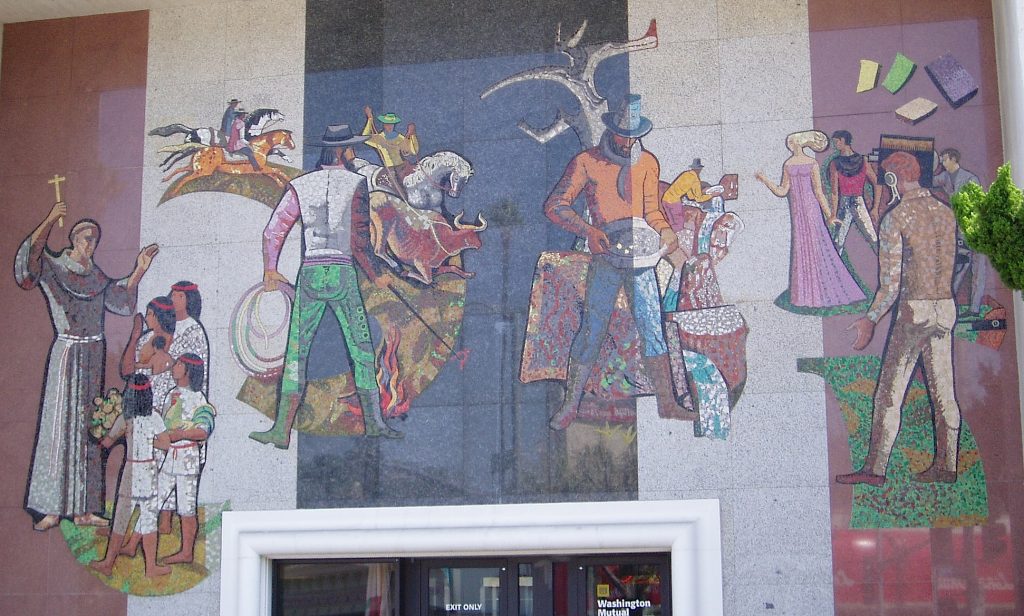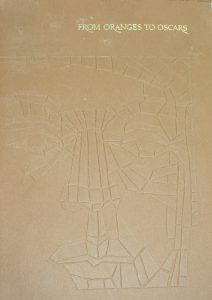My computer has returned, and with them my images — but there are still some loose ends that prevent me from posting my own photograph today.
However, I was pleased to be contacted by M. Danko, who has begun producing lovely photographs of the Home Savings bank art at http://socal-bank-art.blogspot.com/.
As I mentioned earlier, I was in Westminster for a planning meeting linked to my other Southern California avocation, the Past Tense seminar at the Huntington Library. Getting off the freeway, I saw this bank, and then had to maneuver a collection of one-way streets, frontage-ways, alleys, and parking lots to get back to where I could see the bank.
This is a “late” image, near the date Millard Sheets turned over these commissions completely to Susan Hertel and Denis O’Connor. It shows Sue’s styling — flowing lines, organic motifs, family groupings, beautiful abstract trees, contrasting colors. According to the city’s history page, Westminster was known for its temperance colony, and then for “the world’s largest goldfish farm” (probably a large farm, not a large fish) — I can’t say I see any of that represented here. It seems more of a generic design — happy, embracing family, no real connection to the local history, something that does characterize a good number of the artworks.*
From another of the SoCal-Bank-Art images, here, you can see that the bank is set back on the lot, its parking behind; what this Google Maps aerial shot reveals is that behind that is the 405 freeway and the Westminster Mall.
This is a hard bank to get to, I realized, and I wondered if it had always been so. The Westminister Mall was built in the 1970s, so it seems the bank always related to its neighboring properties as it does today; perhaps once the streets were not one-way, when the freeway was less crowded, but this Home Savings location was clearly aimed at mall patrons, much as the Pomona location anchored one end of the downtown pedestrian mall.
This artwork–especially, by the 1970s, when it would have been instantly recognizable to southern Californians–clearly serves in part as a billboard here; the dimensions are about the same, and the combination of the setback and the roadways suggest it was intended to be seen from the car, not admired by passersby.
Indeed, the mall seems essential to the identity of Westminster, California — so much so that Westminster city officials have a satellite office, City Hall at the Mall, to cater to their constituents. So while the bank does not have the approachability of, say, the Sunset and Vine location, it still serves an iconic function, saluting all those that enter the mall, the heart of this community.
*I am trying to provide a new and more comprehensive list/map/timeline of the Home Savings bank art, characterizing some as “historical” along with other themes. I have had a chance to interview some of the architects involved with siting and designing the Sheets Studio work; I am also in touch with those who installed, fabricated, and restored the works, and I am trying to keep abreast of the preservation challenges. So, keep posted, and keep in touch with any leads!




